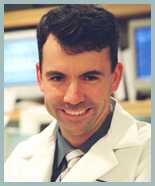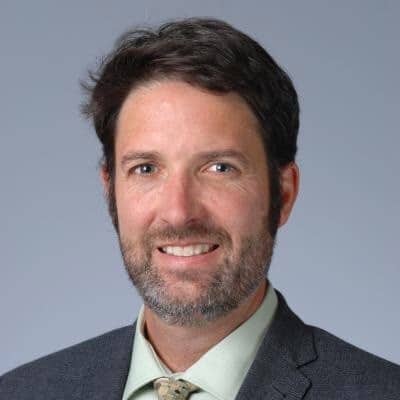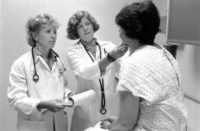If you are a registered nurse, or you are thinking about nursing as a career option, then becoming a nurse practitioner is a great way to prove your experience and expertise.
It allows you more agency when working with patients, as the advanced level of qualification that nurse practitioners have means that they are allowed to make treatment decisions without the supervision of a physician.
Becoming a nurse practitioner also gives you access to higher remuneration, and to specialize in an area of medicine which can be incredibly fulfilling.
 Nurse Practitioners are registered nurses who have carried out extra training, which means that they have more authority than registered nurses and share a similar responsibility level to doctors.
They are able to prescribe medications, order diagnostic tests and provide treatments much as a physician would. Also like a physician, they will have undertaken their training to specialize in a particular area of medicine.
Nurse Practitioners begin their careers as registered nurses, which means that they are used to approaching medicine in a patient-centric way. They will often work with an idea of patient comfort at the forefront of their minds, whereas a doctor can operate with an idea of medical treatment at the forefront of theirs. This means that a combination of doctors and Nurse Practitioners within a healthcare facility can lead to a more rounded care experience.
In some states, Nurse Practitioners are able to operate without the supervision of a doctor. However, in others, they do need to get a sign off for any treatments that they provide. There is a general movement towards allowing Nurse Practitioners more agency as this is helping to relieve strain on the healthcare system.
(more…)
Nurse Practitioners are registered nurses who have carried out extra training, which means that they have more authority than registered nurses and share a similar responsibility level to doctors.
They are able to prescribe medications, order diagnostic tests and provide treatments much as a physician would. Also like a physician, they will have undertaken their training to specialize in a particular area of medicine.
Nurse Practitioners begin their careers as registered nurses, which means that they are used to approaching medicine in a patient-centric way. They will often work with an idea of patient comfort at the forefront of their minds, whereas a doctor can operate with an idea of medical treatment at the forefront of theirs. This means that a combination of doctors and Nurse Practitioners within a healthcare facility can lead to a more rounded care experience.
In some states, Nurse Practitioners are able to operate without the supervision of a doctor. However, in others, they do need to get a sign off for any treatments that they provide. There is a general movement towards allowing Nurse Practitioners more agency as this is helping to relieve strain on the healthcare system.
(more…)
What is a nurse practitioner?
 Nurse Practitioners are registered nurses who have carried out extra training, which means that they have more authority than registered nurses and share a similar responsibility level to doctors.
They are able to prescribe medications, order diagnostic tests and provide treatments much as a physician would. Also like a physician, they will have undertaken their training to specialize in a particular area of medicine.
Nurse Practitioners begin their careers as registered nurses, which means that they are used to approaching medicine in a patient-centric way. They will often work with an idea of patient comfort at the forefront of their minds, whereas a doctor can operate with an idea of medical treatment at the forefront of theirs. This means that a combination of doctors and Nurse Practitioners within a healthcare facility can lead to a more rounded care experience.
In some states, Nurse Practitioners are able to operate without the supervision of a doctor. However, in others, they do need to get a sign off for any treatments that they provide. There is a general movement towards allowing Nurse Practitioners more agency as this is helping to relieve strain on the healthcare system.
(more…)
Nurse Practitioners are registered nurses who have carried out extra training, which means that they have more authority than registered nurses and share a similar responsibility level to doctors.
They are able to prescribe medications, order diagnostic tests and provide treatments much as a physician would. Also like a physician, they will have undertaken their training to specialize in a particular area of medicine.
Nurse Practitioners begin their careers as registered nurses, which means that they are used to approaching medicine in a patient-centric way. They will often work with an idea of patient comfort at the forefront of their minds, whereas a doctor can operate with an idea of medical treatment at the forefront of theirs. This means that a combination of doctors and Nurse Practitioners within a healthcare facility can lead to a more rounded care experience.
In some states, Nurse Practitioners are able to operate without the supervision of a doctor. However, in others, they do need to get a sign off for any treatments that they provide. There is a general movement towards allowing Nurse Practitioners more agency as this is helping to relieve strain on the healthcare system.
(more…)

 If you’re currently working as a nurse, you are probably well aware of just how rewarding and fulfilling a job role it can be. You get to help patients from all walks of life every single day and make a real difference to not only people’s health but their lives more generally. It’s also a career in which there is a lot of scope for progression. There are so many different spheres within the field of nursing that you can choose to specialize in, whether it’s a particular age group (like pediatrics or gerontology) or a particular health condition (like oncology or emergency care).
Some of these paths involve training on the job, whereas others require you to return to college to study and obtain a postgraduate qualification. Among these, one of the highest possible qualifications you can aim for is the DNP, or Doctor of Nursing Practice.
If you’re currently working as a nurse, you are probably well aware of just how rewarding and fulfilling a job role it can be. You get to help patients from all walks of life every single day and make a real difference to not only people’s health but their lives more generally. It’s also a career in which there is a lot of scope for progression. There are so many different spheres within the field of nursing that you can choose to specialize in, whether it’s a particular age group (like pediatrics or gerontology) or a particular health condition (like oncology or emergency care).
Some of these paths involve training on the job, whereas others require you to return to college to study and obtain a postgraduate qualification. Among these, one of the highest possible qualifications you can aim for is the DNP, or Doctor of Nursing Practice. 















